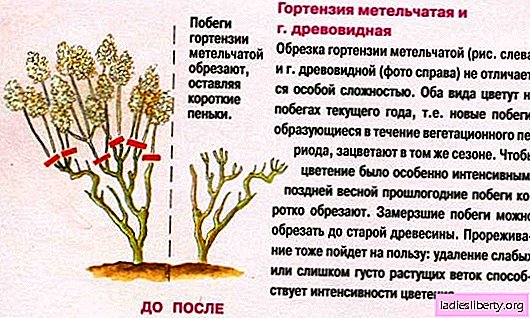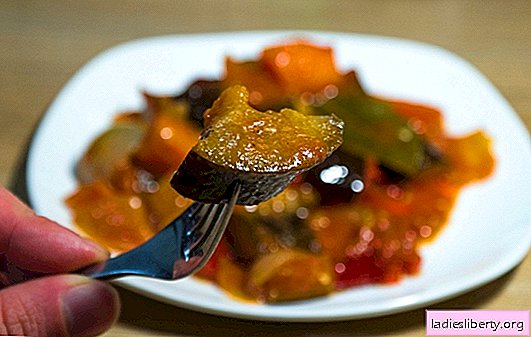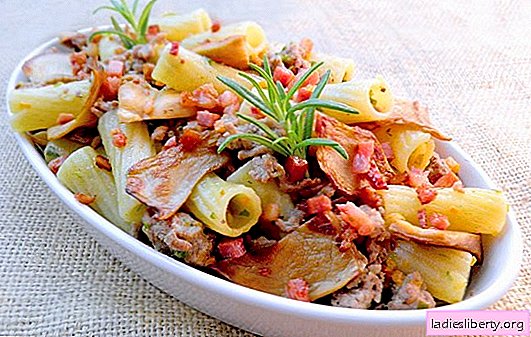
Hydrangea is one of the most remarkable plants of the garden.
Its unusual form of inflorescence emphasizes the sophistication and originality of the design.
However, when growing hydrangea, do not forget that the shrub comes from Asia, which means it belongs to heat-loving crops.
Proper care for hydrangea in the autumn is extremely important.
Highlights of Autumn Hydrangea Care
Caring for hydrangeas is not so difficult. All the procedures have long been familiar to the gardener, but it is imperative to take an integrated approach in preparing hydrangeas for winter.
Winter watering: what is it for?
Hydrangea refers to those plants that are demanding of moisture at all stages of development. Late autumn watering should be carried out before the expected frosts. This will allow the bush to accumulate enough moisture for a long winter. If autumn turned out to be especially rainy, then watering can be omitted.
Fertilizer application
For the full development of flower buds, the bush needs enough nutrients, which need to be replenished in the fall. Hydrangea care includes additional fertilizing with mineral complexes. During this period, only nitrogen fertilizers become an exception, the use of which is unjustified; such top dressing can harm the plant and reduce its winter hardiness. But the presence of phosphorus and potassium in nutrient mixtures is very helpful. These elements help hydrangeas recover after prolonged flowering.
Professional pruning hydrangea in the fall
Autumn care for hydrangea includes competent pruning. Among gardeners there is an opinion that in the fall it is necessary to carry out radical pruning of shrubs for lush flowering next summer. But it is not so. This pruning method is used for tree and panicle hydrangea. But large-leaved hydrangea is not cut. This is due to the peculiarity of its flowering. The buds are laid on the shoots of last year, so they must successfully winter. All other types of shrubs give color to annual shoots, so they must be pruned.
Based on this knowledge, Autumn pruning of the bush is divided into two types:
• cosmetic, which is used for plants flowering on last year's shoots;
• radical, it is used for varieties of hydrangea blooming on annual shoots.
With cosmetic pruning of the bush, problems should not arise. When it is carried out, only damaged shoots, branches thickening the bush, sick and weak, are removed.
How to radically prune hydrangeas in the fall

Many gardeners believe that pruning should be done in the spring, but this is not the case with adult plants.
The fact is that treelike hydrangea can run out of sap and die. Autumn pruning does not produce such results. Those shrubs whose age exceeds 4 years must necessarily be rejuvenated.
To do this, all shoots are removed as close to the ground as possible, leaving only up to 5-10 cm from the surface. Older bushes rejuvenate gradually, removing shoots gradually over several years.
Properly performed autumn pruning does not harm the plant in any way, but rather helps to get a healthy flowering bush next year.
In a hydrangea tree, only old powerful shoots are removed, and in panicled hydrangea, weak, healthy annual growths can be shortened by 5 buds.
Preparing hydrangea for wintering: is it necessary to cover the bush?
In addition to all hydrangea care activities in autumn, sheltering shrubs is important. Why? This is due to the origin of the plant. In the southern regions with a mild climate, in the preparation for winter, hydrangea is enough to hulate and mulch. But in a harsh climate, such events will not save the plant.
How to care for hydrangea in the fall in the northern regions
If winters are unpredictable, then you should take care of shelter shrubs for the winter. There are several ways to do this.
1. Young shrubs can be completely covered with mulching material, additionally covered with a film. This method will preserve the plant until spring, after which the shelter must be removed in time so that hydrangea does not slip.
2. Also young hydrangeas can be covered otherwise. All shoots are tied and bent to the ground, laying boards under them. From above, the bush can be covered with sawdust or spruce branches. After that, a frame is installed over the plant, which is wrapped with lutrasil or other covering material, for example, spanbond.
3. The following method allows you to save hydrangea in particularly harsh winters. To do this, all shoots bend to the ground from the center of the bush and are pinned, and the base is covered with peat. A layer of spruce branches is applied over the shelter and covered with a non-woven material, which is fixed with bricks and pins. In such a shelter, the plant withstands temperatures up to -40 degrees.
4. Shoots on adult hydrangea bushes are quite difficult to lay on the ground and pin, so these plants are covered in a different way. The bush is covered with covering material and well bonded, after which a wire mesh frame is installed over it. The space between the frame and the bush is covered with dry leaves, sawdust or spruce branches. A film or roofing material is pulled over the frame.

In this shelter, hydrangeas winter well until spring. With the advent of warm days, you need to disassemble the frames and release the plant from the covering material. If damaged and frozen shoots are noticed, they must be removed.
It’s important to remember that sheltering a bush must be breathable, which will allow the plant to breathe freely, and the condensate formed will not serve as the beginning of rotting of the buds and shoots. It is better to use lutrasil or spanbond as a covering material. These materials do not accumulate moisture inside the shelter, they are well ventilated.
When sheltering hydrangeas, special attention should be paid to young and newly planted plants, because the winter hardiness of a shrub increases only with age.
In the middle lane, adult hydrangea bushes can overwinter without additional shelter.
Gardener's mistakes
1. Hydrangea often suffers from chlorosis. The cause of the disease becomes improperly selected soil when planting a plant. On too alkaline soils, hydrangea does not grow. Special preparations or high peat will help acidify the soil.
2. When planting hydrangeas, lime and ash must not be added.
3. Flowering shrubs are not very splendid. Hydrangea needs regular feeding. They are used from early spring. Urea, ammonium sulfate, potassium sulfate, superphosphate are used as top dressings. In autumn, hydrangea is fed with rotted compost or manure.
4. Hydrangea does not bloom. The reason for this may be improper planting, violation of the irrigation regime, lack of nutrients in the soil, as well as incorrect pruning of shrubs.
Proper autumn care for hydrangea will give positive results in the next season.
The plant will please with an abundance of flowers until the frost.
Complex measures and hydrangea preparation for wintering will help to maintain the health of the bush for many years.











